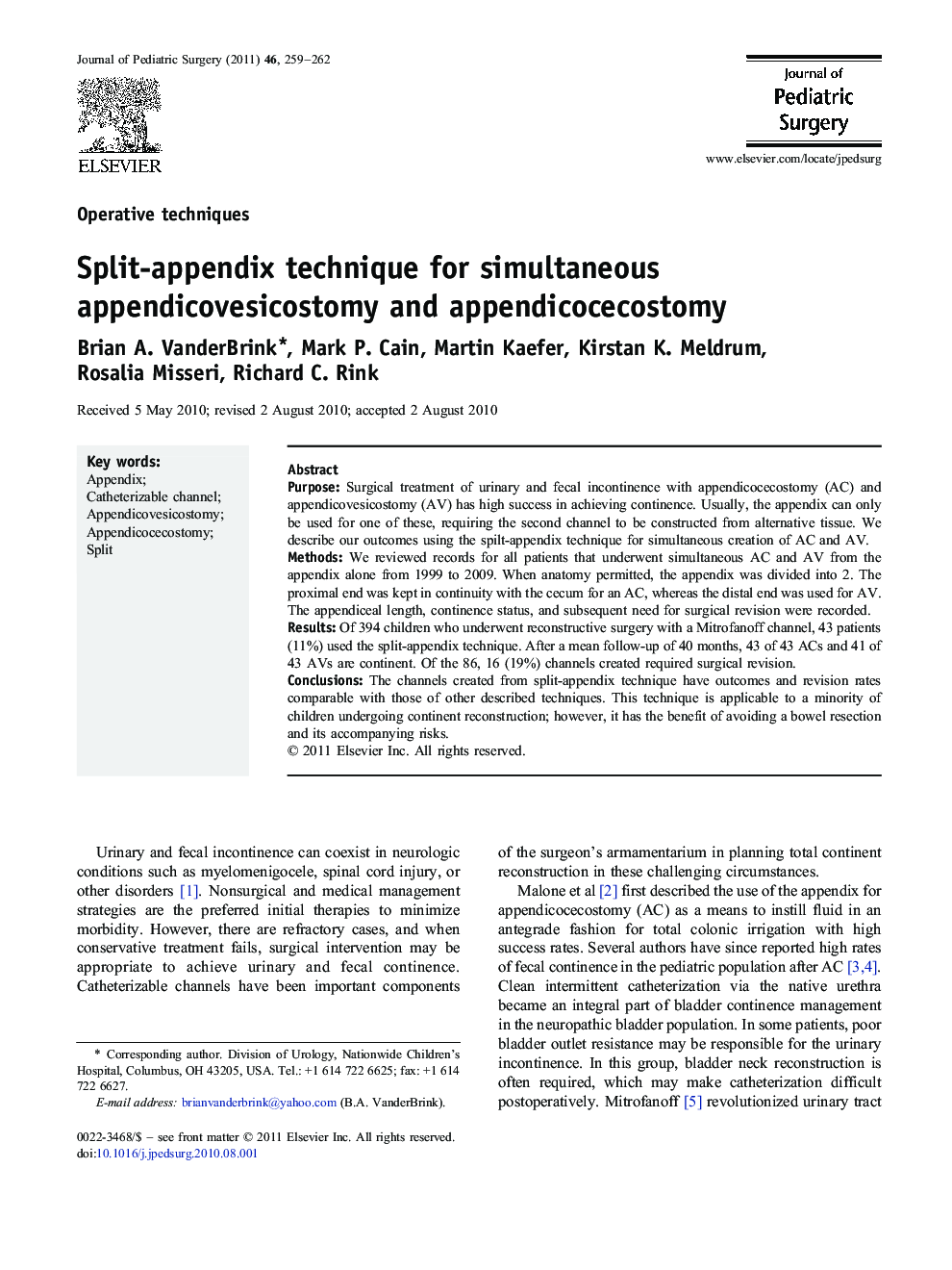| Article ID | Journal | Published Year | Pages | File Type |
|---|---|---|---|---|
| 4157981 | Journal of Pediatric Surgery | 2011 | 4 Pages |
PurposeSurgical treatment of urinary and fecal incontinence with appendicocecostomy (AC) and appendicovesicostomy (AV) has high success in achieving continence. Usually, the appendix can only be used for one of these, requiring the second channel to be constructed from alternative tissue. We describe our outcomes using the spilt-appendix technique for simultaneous creation of AC and AV.MethodsWe reviewed records for all patients that underwent simultaneous AC and AV from the appendix alone from 1999 to 2009. When anatomy permitted, the appendix was divided into 2. The proximal end was kept in continuity with the cecum for an AC, whereas the distal end was used for AV. The appendiceal length, continence status, and subsequent need for surgical revision were recorded.ResultsOf 394 children who underwent reconstructive surgery with a Mitrofanoff channel, 43 patients (11%) used the split-appendix technique. After a mean follow-up of 40 months, 43 of 43 ACs and 41 of 43 AVs are continent. Of the 86, 16 (19%) channels created required surgical revision.ConclusionsThe channels created from split-appendix technique have outcomes and revision rates comparable with those of other described techniques. This technique is applicable to a minority of children undergoing continent reconstruction; however, it has the benefit of avoiding a bowel resection and its accompanying risks.
